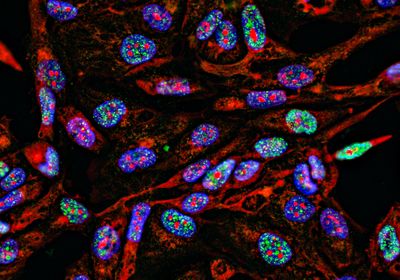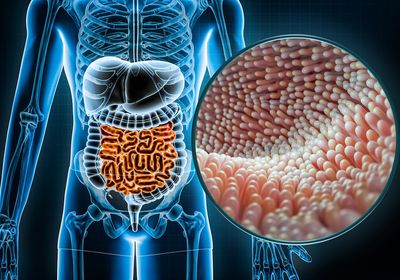
When you think of fat, the first image that comes to mind might be the streaks on a decadent cut of meat. But for Lindsey Muir, a researcher at the University of Michigan who studies adipose tissue—the scientific term for body fat—fat is multifaceted and always changing.
This is especially true as obesity develops, at least in mouse models.1 Fat undergoes metabolic changes and new cell types emerge, including macrophages that eat up debris and dying cells.
“People had been looking at much later time points, but I was very interested in this early time point as the adipose tissue is expanding and changing,” Muir said. “How are these macrophages creating this environment?”
In a study soon to be published in the Journal of Clinical Investigation, Muir studied these immune changes in mice fed a high fat diet to induce obesity.2 Using cutting-edge technologies, she was able not only to measure gene expression in individual immune cells, which provided signs of what each cell’s function was, but also determine their spatial positions in the body fat. Putting this information together provided a richer look at the way different cell types interacted as obesity developed.
“Those are very powerful techniques that have not yet been applied to these questions,” said Susan Fried, an adipose tissue biologist at the Icahn School of Medicine at Mount Sinai who was not involved in this study. “It's very hard to do.”
Studying the spatial organization of body fat is no small task because the slippery tissue can be hard to wrangle. The researchers had to come up with new ways to cut precise slices of fat at cold temperatures to maintain the original spatial structure as they lay them on slides.
Muir and Cooper Stansbury, a graduate student at the University of Michigan who led the study, analyzed fat samples collected from the mice at 8 and 14 weeks to get snapshots of the fat shortly before and after the onset of obesity. One feature they were looking for was crown-like structures, rings of immune cells surrounding dying fat cells that typically appear in obesity.3 The researchers saw these structures forming even one month before the mice developed obesity.
“In obesity, we know that there are spatially localized events—things that we've seen under the microscope for decades,” Stansbury said. “Now we can investigate them molecularly using newer techniques.”
In chronically obese mice, crown-like structures contained an abundance of macrophages filled with lipids, previously dubbed lipid-associated macrophages, or LAMs.4 But in mice that were still early in the process of developing obesity, the researchers noticed different immune cells dominating their crown-like structures: some seemed to be precursors of LAMs, and others were inflammatory macrophages. According to Fried, understanding the diversity of macrophages and their progenitors leading up to obesity could help scientists better understand body fat and metabolic health.
“I'm so glad they did this,” Fried said. “It’s telling us in no uncertain terms that these macrophages serve a specialized function and we need to know what leads to this.”
In future work, Muir and Stansbury hope to look at even more time points leading up to obesity and try to more precisely define the different types of macrophages in fat tissue and their functions, all with spatial context.
“The positions of specific cells in tissues matters quite a lot,” Stansbury said. “Spatial biology has the ability to transform our understanding of tissues.”
References:
- Weisberg SP, et al. Obesity is associated with macrophage accumulation in adipose tissue. J Clin Invest. 2003;112(12):1796-808.
- Stansbury CM, et al. A lipid-associated macrophage lineage rewires the spatial landscape of adipose tissue in early obesity. JCI Insight. 2023;e171701.
- Cinti S, et al. Adipocyte death defines macrophage localization and function in adipose tissue of obese mice and humans. J Lipid Res. 2005;46(11):2347-55.
- Jaitin DA, et al. Lipid-associated macrophages control metabolic homeostasis in a Trem2-dependent manner. Cell. 2019;178(3):686-698.






